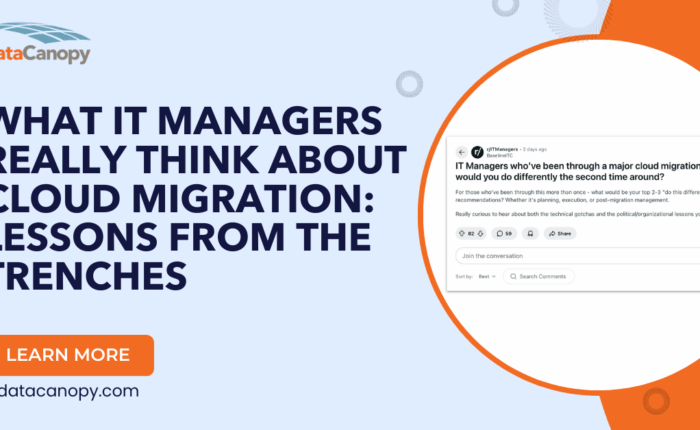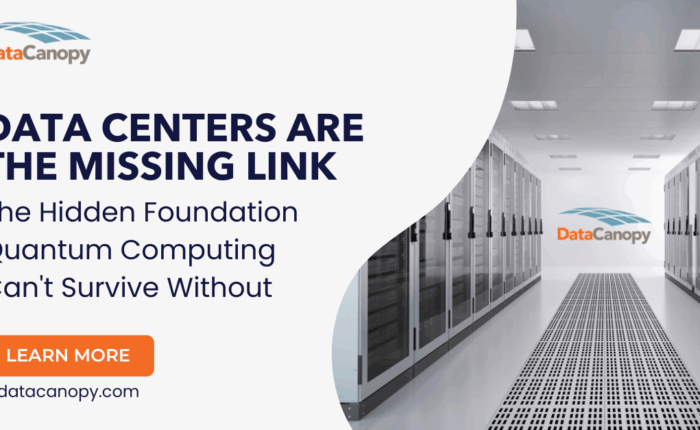Northern Virginia’s data center vacancy rate now sits at just 0.6%. This single statistic is reshaping the entire infrastructure landscape.
The world’s largest data center market is effectively full. What happens next will transform how organizations of all sizes approach their infrastructure strategy for years to come.
At Data Canopy, we’ve watched this transformation accelerate dramatically over the past year. The market absorbed a staggering 847 MW in the second half of 2024 alone, capturing 50% of all North American data center demand. This unprecedented demand has created both challenges and opportunities that few organizations were prepared to navigate.
The Power Paradox
The most significant constraint reshaping the market isn’t physical space. It’s power.
New data center projects are demanding extraordinary amounts of electricity. Facilities commonly request 100 MW or more, with some mega-projects requiring up to 1 GW of power. These massive power requirements are outpacing available infrastructure in many regions.
This creates a challenging dynamic. Large hyperscalers and AI companies secure the bulk of available power capacity, while organizations with smaller but critical infrastructure needs face increasing difficulty finding right-sized solutions.
Data center rents continue to surge across Northern Virginia, with a 12% year-over-year increase in 2024. Organizations renewing five-year leases are experiencing significant sticker shock, often facing up to 50% rent increases while landlord concessions become increasingly rare.
The Geographic Shift
As Northern Virginia reaches near-total saturation, the market is experiencing a shift—not just in geography, but in mindset. Organizations are no longer limited to legacy hubs. Instead, they’re turning to alternative markets that offer immediate capacity, reliable power, and enterprise-grade infrastructure without the hyperscaler competition.
At Data Canopy, we’re already positioned in key secondary and edge markets across the U.S. where capacity is available now—not years from now. From Austin to Atlanta, Houston to Denver, and Newark to Ashburn, our nationwide footprint gives organizations access to right-sized infrastructure in premium facilities without the enterprise-scale minimums.
This shift is about more than availability—it’s about agility. By exploring markets beyond the traditional hotbeds, IT leaders can secure infrastructure that’s not only more accessible but also more aligned with their real-world needs.
What This Means For Your Infrastructure Strategy
The implications of these shifts vary significantly depending on your organization’s size and requirements.
For enterprises with massive computing needs, particularly in AI and machine learning, securing power capacity has become the primary strategic concern. The competition for these resources has never been more intense.
For mid-sized organizations and those in regulated industries like healthcare and finance, the challenge is finding infrastructure solutions that provide enterprise-grade quality without requiring enterprise-scale deployments.
MSPs and technology service providers face perhaps the most complex challenge. They must find flexible infrastructure options that allow them to serve their clients effectively while navigating a market increasingly dominated by hyperscale players.
The Opportunity in Disruption
Despite these challenges, the current market disruption creates significant opportunities for organizations that approach their infrastructure strategy thoughtfully.
The expansion beyond traditional hubs opens access to facilities that might have previously been unavailable to organizations with deployments under 500kW. This is particularly valuable for businesses that need enterprise-grade infrastructure without enterprise-scale requirements.
The shift toward the I-95 corridor also creates opportunities for more flexible, right-sized solutions that align with specific business needs rather than forcing organizations into standardized offerings.
With vacancy rates at historic lows across Northern Virginia, organizations that can secure capacity in this expanded geographic footprint gain a significant competitive advantage.
Navigating the New Landscape
As we look toward 2025 and beyond, several strategies will be critical for organizations seeking to thrive in this transformed market:
First, prioritize flexibility. The ability to scale infrastructure up or down based on actual needs rather than projected requirements will be increasingly valuable as market conditions continue to evolve.
Second, consider geographic diversity. Organizations that expand their infrastructure footprint beyond traditional hubs can often find more favorable economics and greater availability.
Third, focus on right-sized solutions. In a market dominated by hyperscale deployments, there’s significant value in working with partners who understand how to deliver enterprise-grade infrastructure tailored to specific business requirements.
Finally, take a vendor-agnostic approach. The rapidly changing market demands infrastructure solutions built around what’s best for your specific needs, not what a particular provider is trying to sell.
Looking Forward
The data center landscape of the future will bear little resemblance to what we see today. The constraints that currently define the market are driving innovation, geographic expansion, and new approaches to infrastructure deployment.
Organizations that recognize these shifts early and adapt their strategies accordingly will find themselves well-positioned to leverage the opportunities created by this market transformation.
The key will be finding the right partners who understand how to navigate this evolving landscape and can provide infrastructure solutions that align with your specific business requirements rather than forcing you into standardized offerings.
At Data Canopy, we’re committed to helping organizations of all sizes navigate these changes with right-sized, flexible infrastructure solutions that provide enterprise-grade quality without enterprise-scale requirements. The market is transforming rapidly, but with the right approach, your organization can thrive amid these changes.



